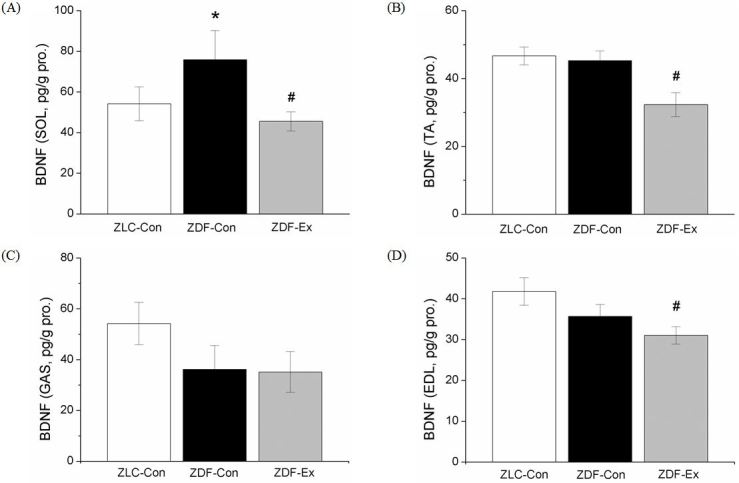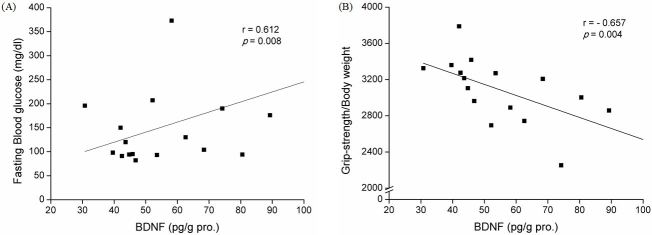1. Dunstan DW., Daly RM., Owen N., Jolley D., De Courten M., Shaw J., Zimmet P.. High-intensity resistance training improves glycemic control in older patients with type 2 diabetes. Diabetes care 2002;25:1729-36. PMID:
10.2337/diacare.25.10.1729. PMID:
12351469.


2. Cuff DJ., Meneilly GS., Martin A., Ignaszewski A., Tildesley HD., Frohlich JJ.. Effective exercise modality to reduce insulin resistance in women with type 2 diabetes. Diabetes care 2003;26:2977-82. PMID:
10.2337/diacare.26.11.2977. PMID:
14578226.


3. Eves ND., Plotnikoff RC.. Resistance training and type 2 diabetes: Considerations for implementation at the population level. Diabetes care 2006;29:1933-41. PMID:
10.2337/dc05-1981. PMID:
16873809.


4. Brooks N., Layne JE., Gordon PL., Roubenoff R., Nelson ME., Castaneda-Sceppa C.. Strength training improves muscle quality and insulin sensitivity in Hispanic older adults with type 2 diabetes. Int J Med Sci 2007;4:19-27. PMID:
10.7150/ijms.4.19. PMID:
17211497.

5. Hawley J., Zierath J.. Physical Activity and Type 2 Diabetes: Therapeutic Effects and Mechanisms of Action: Human Kinetics. 2008.
6. Irvine C., Taylor NF.. Progressive resistance exercise improves glycaemic control in people with type 2 diabetes mellitus: a systematic review. Aust J Physiother 2009;55:237-46. PMID:
10.1016/S0004-9514(09)70003-0. PMID:
19929766.


9. Matthews VB., Astrom MB., Chan MH., Bruce CR., Krabbe KS., Prelovsek O., Akerstrom T., Yfanti C., Broholm C., Mortensen OH., Penkowa M., Hojman P., Zankari A., Watt MJ., Bruunsgaard H., Pedersen BK., Febbraio MA.. Brain-derived neurotrophic factor is produced by skeletal muscle cells in response to contraction and enhances fat oxidation via activation of AMP-activated protein kinase. Diabetologia 2009;52:1409-18. PMID:
10.1007/s00125-009-1364-1. PMID:
19387610.



10. Yamanaka M., Tsuchida A., Nakagawa T., Nonomura T., Ono-Kishino M., Sugaru E., Noguchi H., Taiji M.. Brain- derived neurotrophic factor enhances glucose utilization in peripheral tissues of diabetic mice. Diabetes Obes Metab 2007;9:59-64. PMID:
10.1111/j.1463-1326.2006.00572.x. PMID:
17199719.


11. Gomez-Pinilla F., Ying Z., Opazo P., Roy RR., Edgerton VR.. Differential regulation by exercise of BDNF and NT-3 in rat spinal cord and skeletal muscle. Eur J Neurosci 2001;13:1078-84. PMID:
10.1046/j.0953-816x.2001.01484.x. PMID:
11285004.


12. Dupont-Versteegden EE., Houle JD., Dennis RA., Zhang J., Knox M., Wagoner G., Peterson CA.. Exercise-induced gene expression in soleus muscle is dependent on time after spinal cord injury in rats. Muscle nerve 2004;29:73-81. PMID:
10.1002/mus.10511. PMID:
14694501.


13. Pedersen BK., Pedersen M., Krabbe KS., Bruunsgaard H., Matthews VB., Febbraio MA.. Role of exercise-induced brain-derived neurotrophic factor production in the regulation of energy homeostasis in mammals. Exp Physiol 2009;94:1153-60. PMID:
10.1113/expphysiol.2009.048561. PMID:
19748969.


14. Baldi JC., Snowling N.. Resistance training improves glycaemic control in obese type 2 diabetic men. Int J Sports Med 2003;24:419-23. PMID:
10.1055/s-2003-41173. PMID:
12905089.



15. Ibanez J., Izquierdo M., Arguelles I., Forga L., Larrion JL., Garcia-Unciti M., Idoate F., Gorostiaga EM.. Twice- weekly progressive resistance training decreases abdominal fat and improves insulin sensitivity in older men with type 2 diabetes. Diabetes care 2005;28:662-7. PMID:
10.2337/diacare.28.3.662. PMID:
15735205.


16. Wood RJ., O'Neill EC.. Resistance Training in Type II Diabetes Mellitus: Impact on Areas of Metabolic Dysfunction in Skeletal Muscle and Potential Impact on Bone. J Nutr Metab 2012 2012:268197. PMID:
10.1155/2012/268197.


17. Holten MK., Zacho M., Gaster M., Juel C., Wojtaszewski JF., Dela F.. Strength training increases insulin-mediated glucose uptake, GLUT4 content, and insulin signaling in skeletal muscle in patients with type 2 diabetes. Diabetes 2004;53:294-305. PMID:
10.2337/diabetes.53.2.294. PMID:
14747278.


18. Gregg EW., Beckles GL., Williamson DF., Leveille SG., Langlois JA., Engelgau MM., Narayan KM.. Diabetes and physical disability among older U.S. adults. Diabetes care 2000;23:1272-7. PMID:
10.2337/diacare.23.9.1272. PMID:
10977018.


19. Gregg EW., Mangione CM., Cauley JA., Thompson TJ., Schwartz AV., Ensrud KE., Nevitt MC.. Diabetes and incidence of functional disability in older women. Diabetes care 2002;25:61-7. PMID:
10.2337/diacare.25.1.61. PMID:
11772902.


20. Park SW., Goodpaster BH., Strotmeyer ES., de Rekeneire N., Harris TB., Schwartz AV., Tylavsky FA., Newman AB.. Decreased muscle strength and quality in older adults with type 2 diabetes: the health, aging, and body composition study. Diabetes 2006;55:1813-8. PMID:
10.2337/db05-1183. PMID:
16731847.


21. Park SW., Goodpaster BH., Strotmeyer ES., Kuller LH., Broudeau R., Kammerer C., de Rekeneire N., Harris TB., Schwartz AV., Tylavsky FA., Cho YW., Newman AB.. Accelerated loss of skeletal muscle strength in older adults with type 2 diabetes: the health, aging, and body composition study. Diabetes care 2007;30:1507-12. PMID:
10.2337/dc06-2537. PMID:
17363749.


22. Park SW., Goodpaster BH., Lee JS., Kuller LH., Boudreau R., de Rekeneire N., Harris TB., Kritchevsky S., Tylavsky FA., Nevitt M., Cho YW., Newman AB.. Excessive loss of skeletal muscle mass in older adults with type 2 diabetes. Diabetes care 2009;32:1993-7. PMID:
10.2337/dc09-0264. PMID:
19549734.



23. Hovanec N., Sawant A., Overend TJ., Petrella RJ., Vandervoort AA.. Resistance training and older adults with type 2 diabetes mellitus: strength of the evidence. J Aging Res 2012 2012:284635. PMID:
10.1155/2012/284635.


24. Fiatarone MA., O'Neill EF., Ryan ND., Clements KM., Solares GR., Nelson ME., Roberts SB., Kehayias JJ., Lipsitz LA., Evans WJ.. Exercise training and nutritional supplementation for physical frailty in very elderly people. N Engl J Med 1994;330:1769-75. PMID:
10.1056/NEJM199406233302501. PMID:
8190152.


25. Nelson ME., Fiatarone MA., Morganti CM., Trice I., Greenberg RA., Evans WJ.. Effects of high-intensity strength training on multiple risk factors for osteoporotic fractures. A randomized controlled trial. JAMA 1994;272:1909-14. PMID:
10.1001/jama.1994.03520240037038. PMID:
7990242.


27. Boule NG., Haddad E., Kenny GP., Wells GA., Sigal RJ.. Effects of exercise on glycemic control and body mass in type 2 diabetes mellitus: a meta-analysis of controlled clinical trials. JAMA 2001;286:1218-27. PMID:
10.1001/jama.286.10.1218. PMID:
11559268.


28. Funakoshi H., Frisen J., Barbany G., Timmusk T., Zachrisson O., Verge VM., Persson H.. Differential expression of mRNAs for neurotrophins and their receptors after axotomy of the sciatic nerve. J Cell Biol 1993;123:455-65. PMID:
10.1083/jcb.123.2.455. PMID:
8408225.




29. Koliatsos VE., Clatterbuck RE., Winslow JW., Cayouette MH., Price DL.. Evidence that brain-derived neurotrophic factor is a trophic factor for motor neurons in vivo. Neuron 1993;10:359-67. PMID:
10.1016/0896-6273(93)90326-M. PMID:
8080464.


30. Shevalye H., Watcho P., Stavniichuk R., Dyukova E., Lupachyk S., Obrosova IG.. Metanx alleviates multiple manifestations of peripheral neuropathy and increases intraepidermal nerve fiber density in Zucker diabetic fatty rats. Diabetes 2012;61:2126-33. PMID:
10.2337/db11-1524. PMID:
22751692.



31. Fernyhough P., Diemel LT., Brewster WJ., Tomlinson DR.. Altered neurotrophin mRNA levels in peripheral nerve and skeletal muscle of experimentally diabetic rats. J Neurochem 1995;64:1231-7. PMID:
10.1046/j.1471-4159.1995.64031231.x. PMID:
7861156.


32. Fernyhough P., Maeda K., Tomlinson DR.. Brain-derived neurotrophic factor mRNA levels are up-regulated in hindlimb skeletal muscle of diabetic rats: effect of denervation. Exp Neurol 1996;141:297-303. PMID:
10.1006/exnr.1996.0164. PMID:
8812163.


33. Andersen H.. Reliability of isokinetic measurements of ankle dorsal and plantar flexors in normal subjects and in patients with peripheral neuropathy. Arch Phys Med Rehabil 1996;77:265-8. PMID:
10.1016/S0003-9993(96)90109-4. PMID:
8600869.


35. Andreassen CS., Jakobsen J., Flyvbjerg A., Andersen H.. Expression of neurotrophic factors in diabetic muscle--relation to neuropathy and muscle strength. Brain 2009;132:2724-33. PMID:
10.1093/brain/awp208. PMID:
19696031.



36. Malysz T., Ilha J., Severo do Nascimento P., Faccioni-Heuser MC., De Angelis K., D'Agord Schaan B., Achaval M.. Exercise training improves the soleus muscle morphology in experimental diabetic nerve regeneration. Muscle nerve 2011;44:571-82. PMID:
10.1002/mus.22133. PMID:
21922469.


37. De Angelis KL., Oliveira AR., Dall'Ago P., Peixoto LR., Gadonski G., Lacchini S., Fernandes TG., Irigoyen MC.. Effects of exercise training on autonomic and myocardial dysfunction in streptozotocin-diabetic rats. Braz J Med Biol Res 2000;33:635-41. PMID:
10.1590/S0100-879X2000000600004. PMID:
10829091.



38. Harthmann AD., De Angelis K., Costa LP., Senador D., Schaan BD., Krieger EM., Irigoyen MC.. Exercise training improves arterial baro- and chemoreflex in control and diabetic rats. Auton Neurosci 2007;133:115-20. PMID:
10.1016/j.autneu.2006.10.004. PMID:
17196889.


39. Souza SB., Flues K., Paulini J., Mostarda C., Rodrigues B., Souza LE., Irigoyen MC., De Angelis K.. Role of exercise training in cardiovascular autonomic dysfunction and mortality in diabetic ovariectomized rats. Hypertension 2007;50:786-91. PMID:
10.1161/HYPERTENSIONAHA.107.095000. PMID:
17664387.


40. Selagzi H., Buyukakilli B., Cimen B., Yilmaz N., Erdogan S.. Protective and therapeutic effects of swimming exercise training on diabetic peripheral neuropathy of streptozotocin-induced diabetic rats. J Endocrinol Invest 2008;31:971-8. PMID:
10.1007/BF03345634. PMID:
19169052.



41. Kust BM., Copray JC., Brouwer N., Troost D., Boddeke HW.. Elevated levels of neurotrophins in human biceps brachii tissue of amyotrophic lateral sclerosis. Exp Neurol 2002;177:419-27. PMID:
10.1006/exnr.2002.8011. PMID:
12429188.


42. Copray S., Liem R., Brouwer N., Greenhaff P., Habens F., Fernyhough P.. Contraction-induced muscle fiber damage is increased in soleus muscle of streptozotocin-diabetic rats and is associated with elevated expression of brain-derived neurotrophic factor mRNA in muscle fibers and activated satellite cells. Exp Neurol 2000;161:597-608. PMID:
10.1006/exnr.1999.7306. PMID:
10686079.


43. Griesbeck O., Parsadanian AS., Sendtner M., Thoenen H.. Expression of neurotrophins in skeletal muscle: quantitative comparison and significance for motoneuron survival and maintenance of function. J Neurosci Res 1995;42:21-33. PMID:
10.1002/jnr.490420104. PMID:
8531223.












